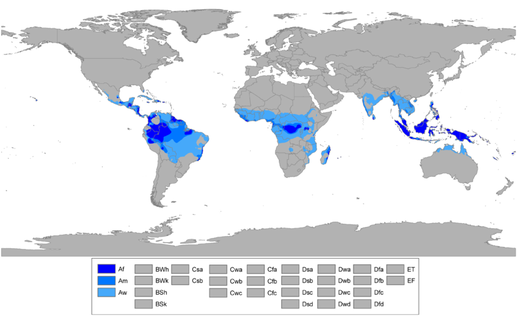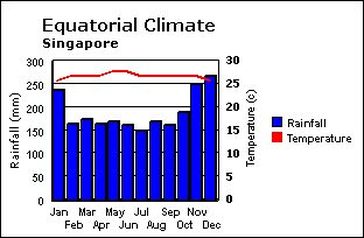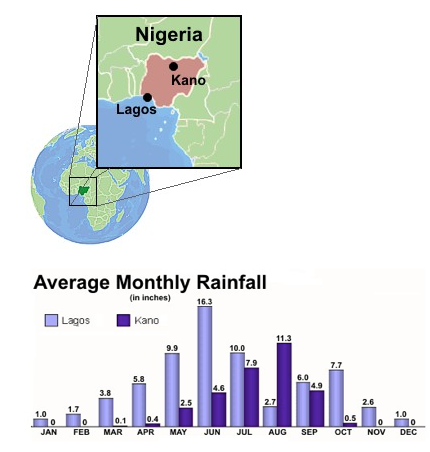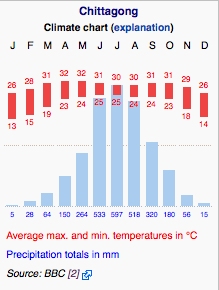
Tropical climate zonesThe map below shows the areas within the tropics which have all 12 months of the year with temperatures above 18 °C. The types of tropical climate are classified as Tropical Rainforest or Equatorial (Af), Tropical Monsoon (Am) and Tropical Wet and Dry or Savannah (Aw) and Desert ( exceptions: Owing to different causes certain places within the tropics do not have a tropical climate, such as some desert areas and alpine regions.) As can be observed in the map these three tropical climates are confined to a global band known as the Tropics which falls between the northern latitude of Tropic of Cancer and the sourther latitude, Tropic of Capricorn. The general pattern of the tropical climate is warm temperatures. Depending on the type of tropical climate, humidity is variable with Equatorial climates experiencing large quantities of precipitation all year round and Tropical Wet and Dry and Tropical Monsoon climates expereincing seasonal shifts in rain patterns and in Desert almsot no rain.
Tropical climate chart: Singapur

Savannah . Lagos

TROPICAL MONSOON CLIMATE

Tropical ecosystem
Tropical rainforest
Tropical rainforest ecosystems include
significant areas of biodiversity, often coupled with high
species endemism.
Rainforests are home to half of all the living animal and plant species on the
planet and roughly two-thirds of all flowering plants can be found in
rainforests The most representative are the Borneo rainforest,
one of the oldest rainforests in the world, the Brazilian and Venezuelan Amazon
Rainforest, as well as the eastern Costa Rican rainforests.
Tropical seasonal forest
Seasonal tropical forests generally
receive high total rainfall, averaging more than 1000 mm per year, but
with a distinct dry season They include: the Congo forests,
a broad belt of highland tropical moist broadleaf forest which
extends across the basin of the Congo River;
Central American tropical forests in Panama and Nicaragua;
the seasonal forests that predominate across much the Indian subcontinent, Indochina and
in northern Australia: Queensland.
Tropical dry broadleaf forest
Tropical dry broadleaf forests are
territories with a forest cover that is not very dense and has often an
unkempt, irregular appearance, especially in the dry season This type of
forests often include bamboo and teak as the dominant
large tree species, such as in the Phi Pan Nam
Range, part of the Central Indochina dry forests They are
affected by often very long and intense seasonal dry periods and, though less
biologically diverse than rainforests, tropical dry forests are home to a wide
variety of wildlife.
Tropical grasslands, savannas, and shrublands
Tropical
grasslands, savannas, and shrublands are spread
over a large area of the tropics with a vegetation made up mainly of low shrubs and grasses, often
including sclerophyll species Some of the most
representative are the Western Zambezian grasslands in Zambia and Angola,
as well as the Einasleigh upland savanna in Australia.
Tree species such as Acacia and baobab may
be present in these ecosystems depending from the region.
